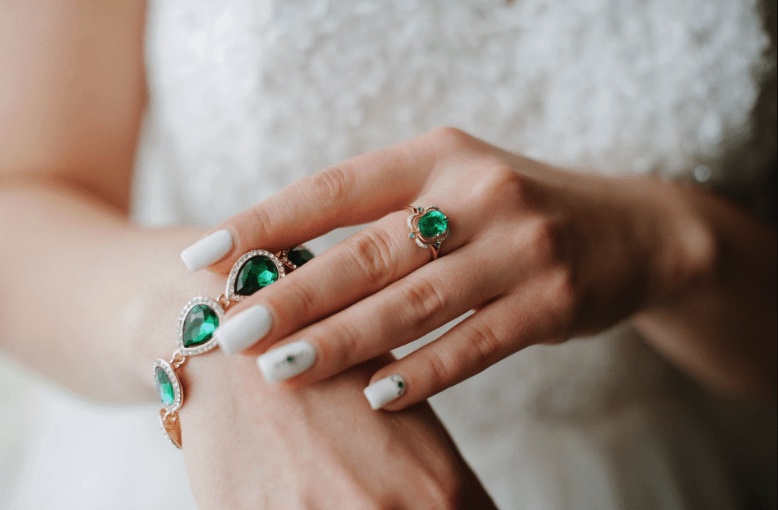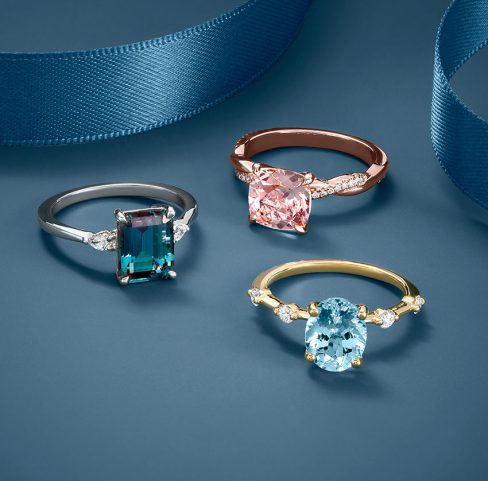
The Emerald May birthstone is one of the world’s most beautiful and captivating stones. With its stunning rich green colour, this gem had the world falling in love with it for over six thousand years.
As a result, the Emerald has always been one of the most treasured and desirable gemstones, at times even surpassing the diamonds compared in worth.
An Emerald will make the ideal present for everyone born in May, with the Zodiac sign of Taurus and Gemini. However, you can still enjoy these stones even if you are not a May baby.
Carrying the most abundant hue in nature and powers to bring clarity and unconditional love makes the Emerald highly popular among precious gemstone lovers.
May Birthstone History & Symbolism
The dazzling colour of an emerald evokes images of prosperity and growth. The meaning of May’s birthstone has positive connotations throughout various cultures making this gemstone revered across the world. The emerald is a symbol of unconditional love. Hinduism associates the colour green with the heart chakra, making the emerald a symbol of the heart and universal love. Love symbology is mirrored in Roman mythology, where the emerald is linked with the goddess Venus, the goddess of love.
In the Middle Ages, the meaning behind the emerald birthstone was a symbol of fertility and good fortune. In the past, emeralds aided physical conditions like eliminating impatience from the body, restoring exhausted travellers, and resisting the devil. Many crowns and royal jewellery are adorned with these precious deep emerald green gemstones.
Today, emeralds are renowned around the world for their beauty. Emeralds are said to be a powerful stone for manifestation and patience. Those born in the month of May wear emerald birthstone rings, necklaces, and broaches to feel an affinity with the positive properties of this stone.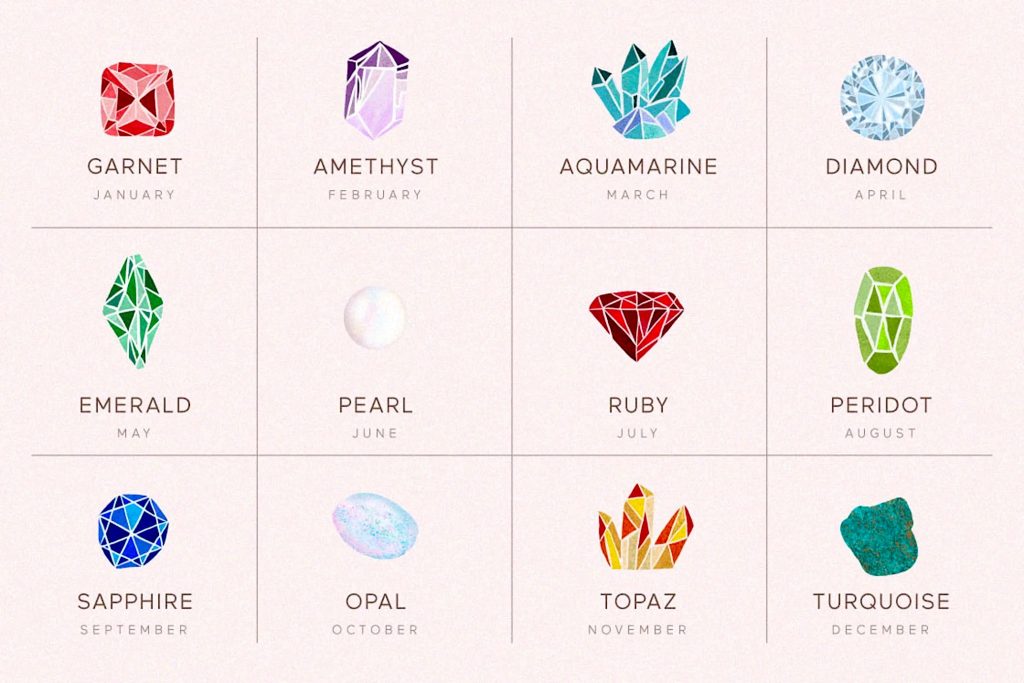
Where Is The May Birthstone Found?
A truly ancient gemstone…
Believed to have been mined since 330 BC by the Egyptians and thought to be Cleopatra’s favourite gem. This beautiful green gemstone has been revered by many cultures over the eons. The ancient Romans believed Emerald represented Venus, the Goddess of beauty and love. Hence why the colour green has been the colour of beauty and constant, unconditional love for centuries. In the Middle Ages they were believed to hold the power to forecast the future and the early Christians saw them as a symbol of the resurrection of Christ.
In places where beryllium, chromium, and vanadium intermingle, you are likely to find an emerald mine. The most well-known emeralds come from South America.
Colombian emeralds are some of the finest emerald specimens in the world. Emeralds from Colombia have a low iron content giving them a green colour with a slight blue hue. Colombian emeralds typically have few impurities or inclusions, a quality rarely found in emeralds.
The oldest emerald in the world was discovered in South Africa and is a venerable age of 2.9 billion years. Emerald has been used to make jewellery since 4,000 years ago and not coincidentally, the oldest emerald mines ever known in history were in Ancient Egypt, from there emerald stones spread throughout antiquity. The Egyptians believed for a long time in the magical properties of emeralds, the pharaohs and high priests being often buried wearing an emerald around their necks as a symbol of eternal youth.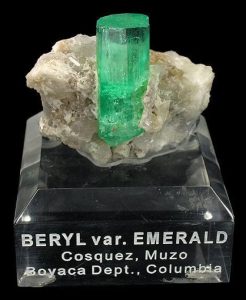
Found in Columbia
Cleopatra, one of the most famous queens of Egypt, had a soft spot for emeralds. To highlight the beauty of her eyes, she wore gold jewellery inlaid with emeralds, on which the jewellers carved her face. The emeralds were even studded in the furniture and walls of the palace, Cleopatra wanting to surround herself with the “green harmony” of the precious stones.
It is even said that on the day she met Julius Caesar, Cleopatra greeted him wearing a tiara and gold bracelets with pearls and emeralds, having at her feet holy cats adorned with stones as green as her eyes.
The emerald mines of Egypt were exploited for centuries by the Egyptians, then by the Romans, Byzantines and Arabs. They were permanently closed once with the discovery of the huge emerald deposits in the New World, invaded by the Spanish conquistadors, in the 15th and 16th centuries AD.
The Spanish conquistadors brought immense riches in gold and precious stones to Europe, but the most beautiful and desired jewels were the emeralds, brought from the Inca and Aztec empires by conquerors like Francisco Pizarro and Hernan Cortes.
Legend has it that the emerald was one of the four precious stones that God gave to King Solomon and that endowed him with power over all creatures.
Emeralds are still among the most appreciated gemstones in the world even today, both for their unmistakable colour and their energetic vibrations. Emerald-studded jewellery can become a talisman for the wearer, especially when the green stone is studded in an engagement ring.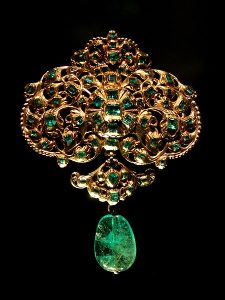
Gold and emerald pendant from Spain
Emerald mines can be found in:
-
Colombia
-
India
-
Austria
-
Brazil
-
Pakistan
-
China
-
Norway
-
Russia
-
South Africa
-
Zambia
-
Zimbabwe
-
The United States
-
Canada
Emeralds are also synthetically made. Lab-grown emeralds are another wonderful choice as they have a lower carbon footprint than gems extracted by the mining industry.
Technology for synthetic emeralds is advancing every year. Today, lab-created Colombian emeralds are available for sale around the world. When purchasing a synthetic emerald, keep in mind that lab-created Colombian emeralds are not technically Colombian emeralds but called so as a measure of quality.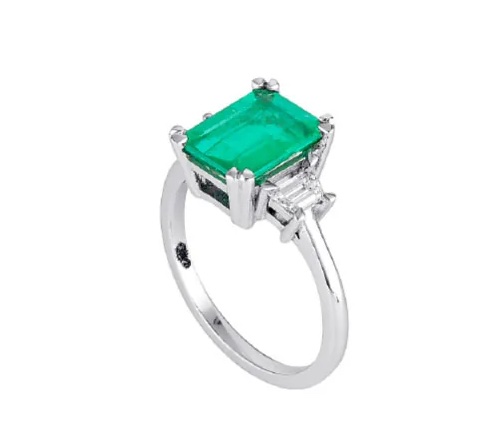
The Value Of The May Birthstone
Emeralds are precious gemstones valued for their rich green colour and clarity. Emeralds are made from a rare combination of chemicals. As emeralds form, the chemical components determine how richly green the colour will appear, influencing their aesthetic appeal. The May birthstone is a combination of the mineral beryl and the chemicals chromium or vanadium that add the classic emerald green colour. If a beryl stone does not have ample amounts of chromium or vanadium, the stone is classified as light-green beryl rather than an emerald.
Earlier, we mentioned Colombian emeralds as some of the best emerald specimens due to their low iron content. Colombian emeralds, and the most valuable emerald specimens, have a slightly bluish hue to them. Of course, gem colouring in your jewellery is a matter of preference. Zambia produces emeralds with beautiful clarity. Zambia emeralds are deep green with less of a blue hue than Colombian emeralds.
Emeralds are Type 3 gemstones. This term means that emeralds typically have inclusions because of their formation process. Inclusions are small cracks within the gem that give an emerald character. An emerald with fewer inclusions will be priced higher than emeralds with more visible inclusions. It is nearly impossible to find a natural emerald with no inclusions at all.
Emeralds are often treated with cedar oil or a resin filling to improve durability and the overall luster of the gemstone.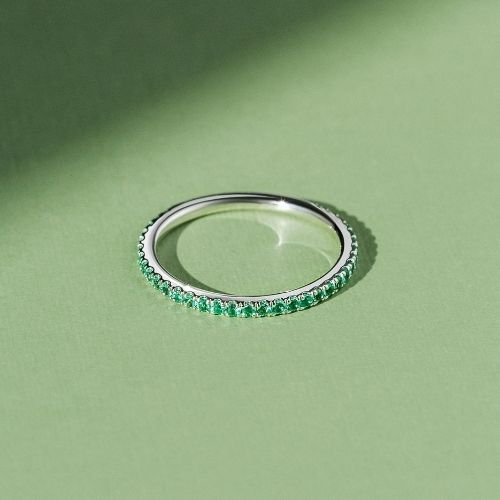
What is the May Birthstone Colour?
The most important value factor of emerald is its green colour. It is interesting, then, that the definition of colour for what it takes for a beryl gem to be called emerald is actually not as well defined as it is for many other gems. As you will often see repeated with regard to coloured gemstones, the colour of emerald is evaluated based on the combination of three factors: hue, tone, and saturation.
Hue is what we usually think of when someone mentions colour and it is the most definitively outlined of the three factors. Emeralds must have a dominant green hue which can be pure, show some blue or a very minor level of yellow. A majority, but not all, of the May birthstone crystals are dichroic, showing more yellow when viewed from one direction and more blue from another. Gems which exhibit a degree of yellow when viewed face-up are typically less valuable than those with green or bluish-green hues. However, every hue has a following of its own and you should select gems whose colour appeals to you.
Tone (how light/dark the colour is) and saturation (how strongly the hue is expressed) of emerald is extremely important because, if either or both are too light, the gem won’t qualify as emerald and is simply called green beryl. Exactly how experts define “too light” can vary a little, but this will not impact you as you shop for birthstone jewellery as only a tiny fraction of gems whose colour is extremely close to the limit are in question. Professional grading laboratories like the GIA do not leave anything to chance and keep comparison stones available. The finest emeralds will pair the famous green or bluish-green hue with strong or vivid saturation and medium to medium-dark tone. The colour of good quality stones is evenly distributed across the crystal with no noticeable patches or variation.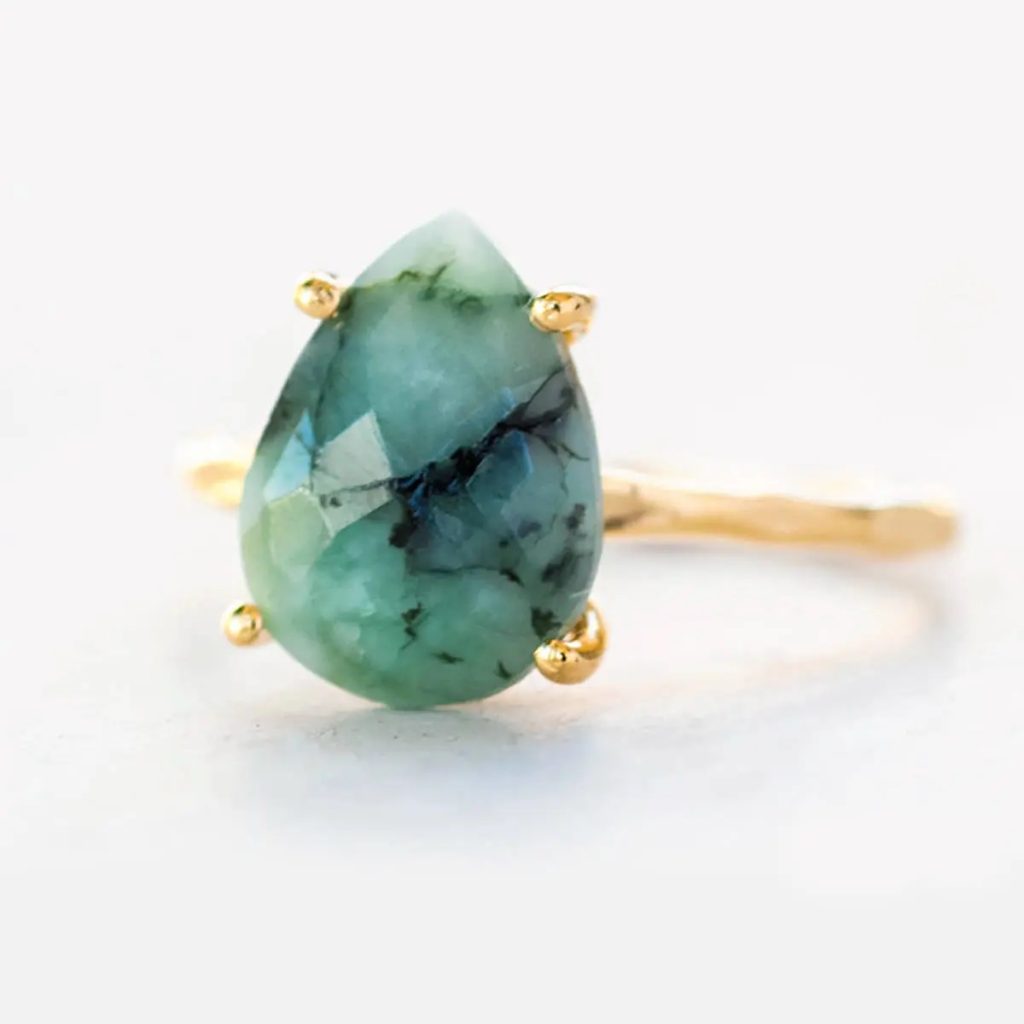
The coveted colour of emerald is caused by trace elements in the crystal structure. Similar to one of its beryl cousins, the March birthstone aquamarine, the presence of iron in emerald will induce blue. The green colour is primarily caused by either chromium or vanadium. Generally, higher concentrations of these elements intensify the colour saturation of the stone. It can be useful to analyse the chemistry of emeralds because the various deposits often have location-specific chemical signatures. In determining the concentrations of the elements that are present, scientists are sometimes able to tell the broad region where an emerald comes from. This is a nifty trick that does not work for all types of gemstones.
Because the nuances of colour have a significant impact on value, you may encounter some trade names which describe specific hue, tone, and saturation combinations. These trade names were selected for the sources whose product typifies the colour being described, but it is important to know that they only address the colour of a stone and do not guarantee that the gem came from that location.
- Columbian – Emeralds whose colour can be described as Columbian represent that ideal combination of a bluish-green hue with strong to vivid saturation and medium to medium-dark tone. This is the famous unrivalled green that some have described as so exceptional that it has no counterpart in nature.
- Brazilian – Many of the Brazilian gems have a notably lighter tone than emeralds from other deposits. They are dark enough to still be called emerald, but their colour is a little less intense.
- Zambian – Gems that have a darker tone with more blue in their hue are frequently called Zambian. These emeralds have a distinct appearance that appeals to people who are drawn to cooler colours.
- Sandawana – The emeralds mined in the Sandawana mines located in Zimbabwe were set apart by a number of factors. With regards to colour, high levels of chromium induced a very strong green hue.
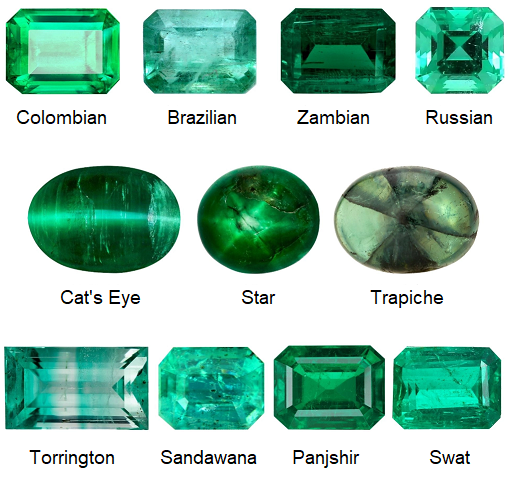
Is Emerald Durable?
Emerald could only be part of the Big 3 group if they were strong enough to be worn and loved for many years. That being said, the gem is not as strong as sapphire or ruby so some precautions should be taken to keep your gems looking their best. Emerald has a Mohs hardness score of 7.5-8. This means that its surface is overall very resilient but can be scratched, especially if it is stored improperly and allowed to rub against metal settings or stronger gems like sapphire and diamond.
It was mentioned in the introduction that almost all emeralds have at least some eye-visible inclusions and/or fractures which are collectively called a ‘Jardin’ (Garden in French). These features lend individual gems a unique character and can be beautiful if their distribution is balanced and does not cloud the transparency of the gem. However, they can weaken the structure of the crystal if they are especially numerous. Emeralds with lots of clarity characteristics may be more vulnerable to breakage if they are impacted. Clarity characteristics also might be an issue if the gem is exposed to a sudden change in atmospheric pressure, so you may want to leave valuable jewellery at home if you plan to travel by air. If all other factors are the same, emeralds with fewer clarity characteristics are more valuable than those with more.
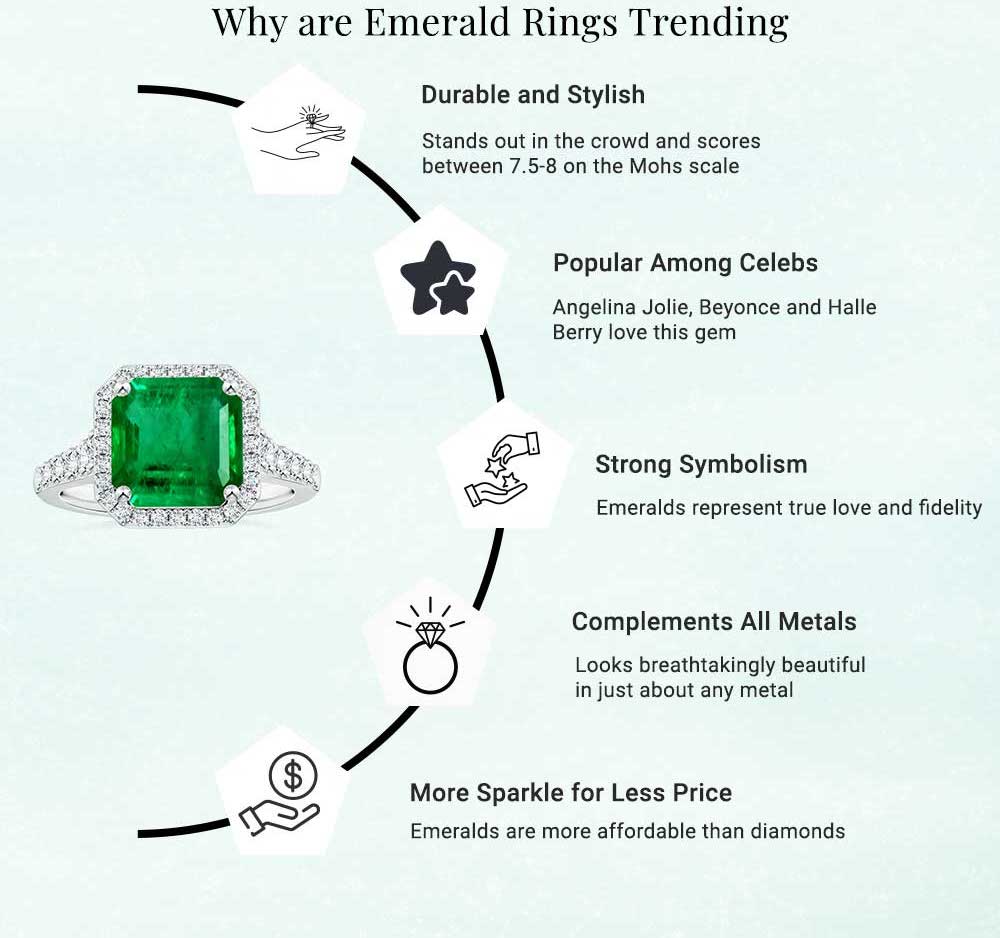 May Birthstone Cleaning And Care Tips
May Birthstone Cleaning And Care Tips
The emerald stone has a hardness of 7.5 to 8.0 on the Mohs hardness scale. For reference, a diamond has a hardness of 10 while chalk has a hardness of 3. The emerald stone is durable and scratch-resistant. However, since emeralds have inclusions, they are vulnerable to damages from prolonged and daily wear.
Daily wear of an emerald will cause it to lose some of its shine and may deteriorate the edges of the facets. The best way to clean emeralds is to use a mixture of warm water and soap. Emeralds can go in the water, but be mindful not to let them soak for longer than necessary. Dry your emerald jewellery with a soft microfibre towel and watch it sparkle like new.
Do not use cleaning techniques with steam, chemicals, or high heat when cleaning your emerald jewellery as this can cause fractures in the gem.
May Birthstone Facts
-
Emeralds grow hexagonal in shape.
-
Under Cleopatra’s rule, emeralds were mined in 300 BC.
-
Elizabeth Taylor had a famous Bulgari necklace made from sixteen step-cut Colombian emeralds with a 23.44-carat emerald pendant.
-
Emeralds, aquamarines, and morganite are made from beryl stone. It is the chromium and vanadium that make an emerald green.
-
The Rockefeller Emerald is the largest flawless emerald and is valued at USD 5.5-million.
-
Emeralds are often more expensive than diamonds.
 May Birthstone FAQs
May Birthstone FAQs
What Are The Two Birthstones For May?
The two birthstones for the month of May are emeralds and agate. The emerald is a lustrous green gemstone and agate is a multi-coloured rock formation made of chalcedony and quartz. May birthstone rings and jewellery include either or both of these beautiful natural stones.
What Colour Is The May Birthstone?
Emerald green is a rich, dark green colour. The May birthstone is the emerald, a gem that defines a shade of green. Emeralds range in shade, with more valuable specimens being darker green and less valuable ones pale green.
What Is May’s Birthstone And Flower?
There are two birthstones and two birth flowers for those born in the month of May. The emerald gemstone and agate mineral are May’s birthstone. The hawthorn and lily of the valley are May’s birth flowers.
Are there synthetic emeralds?
Synthetic emeralds have been on the market since the late 1930s and there are now several ways to produce them. Synthetics often have higher than average clarity and appear the same as natural gems to the unaided eye, but gemologists can identify them using simple magnification. Sellers always must say if their inventory is lab-grown.
May Birthstone Jewellery
Discover some of our favourite and most popular emerald birthstone jewellery below!
Final Thoughts
Do you have a May birthday or have a favourite piece of emerald jewellery? Let us know on Instagram, Facebook, Youtube and TikTok or in the comments below! Contact us!



